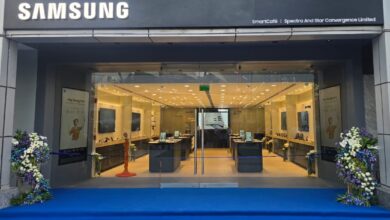[15 Years of TV Leadership] ② How Our TVs Underpin Our Lifestyles

The TV, often the centerpiece of the home, is much more than just a device for content consumption. Televisions can showcase new functions in addition to setting the mood for the household with their aesthetic designs. By analyzing users’ lifestyle patterns and catering its new products and strategies to them, Samsung has long provided users with a range of attractive television choices to match their needs.
With its innovative television solutions, Samsung, the leader of the global TV market for the past 15 straight years, is realizing ‘A Better Normal’ in users’ actual lives. In part two of this series, Samsung Newsroom looks at how global trends and innovative products like Samsung’s television line-up have come to shape the very ways consumers live their lives.
How Lifestyle TVs Reflect Our Distinct Lives
Contemporary users spend a lot of time with their TVs. Thus, it is important that they select a TV that is a match for their individual lifestyle. According to its product development philosophy, which prioritizes ‘respect for all users’ preferences’, Samsung has developed innovations in fields ranging from screen design to user experience. And with Samsung opening the door to an era of more flexible and customizable lifestyle televisions, users no longer need to match their lifestyles to their TVs.

One initial aspect that Samsung analyzed was distinct patterns across different generations and lifestyles. A variety of lifestyles were taken into consideration in order to develop products that would fit a range of needs. For example, The Sero, a Samsung TV capable of alternating between vertical and horizontal orientation, was launched to meet the needs of a Millennial generation that enjoys consuming mobile content. Likewise, The Serif, a TV with an iconic design, was developed to satisfy those who value aesthetic appeal. The Frame, a TV that can be hung like a piece of artwork, is for those who prioritize artistic appeal.

The Premiere, an ultra-short throw (UST) projector which transforms the home into a theater, is another case in point. This industry’s first triple laser projector with 4K resolution and Smart TV UI delivers a remarkable in-home cinema viewing experience. Samsung went even further in meeting a range of diverse user needs with The Terrace, an outdoor TV that allows users to expand their home entertainment experiences to the outdoors.
Bigger is Better: The Trends Behind the Evolution of Premium TVs

Formerly minor facets of our lives like home training, telecommuting, and remote learning have become major parts of our regular routines recently. As we are required to spend more time indoors, more people are both working and playing from home, making our screens our windows to the wider world. Thus, more and more users have been investing in larger screens and premium televisions, with the popularization of various OTT services also contributing to this. Last year, experts forecasted that sales of large-screen TVs (over 75” in size) and 8K-resolution TVs would rise by 22% and 118% respectively this year.1

Samsung Electronics took this trend into account too, diversifying its QLED TV model lineup to include 85, 75, 65, and 55-inch options. To further satisfy users with diverse expectations of large-screen TV functionality, Samsung also implemented 8K maximum resolution on the televisions and maintained a keen emphasis on sound quality. In particular, Samsung’s Object Tracking Sound (OTS) technology, a dynamic sound feature that corresponds to the movement of objects on screen, allows users to experience more realistic sounds while consuming their content. To further deliver optimized gaming performance, Samsung has also partnered with AMD to develop the first TVs with Freesync Premium Pro support for both PC and console games in its 2021 Neo QLED and QLED lineup.

These days users can experience the very best in displays from the comfort of their homes. For instance, the MICRO LED 110” model that Samsung unveiled in December 2020 breaks new ground in the premium display domain by showing users just how attractive a large-screen TV can be. The MICRO LED uses micrometer-sized LED lights to eliminate the backlight and color filters utilized in conventional displays. It is self-illuminating, producing stunningly lifelike colors and brightness through its 24 million individually controlled LEDs. The display’s Monolith design, defined by its screen-to-body ratio of over 99%, additionally allows it to fit naturally anywhere in the home. The new Multi View feature, which allows users to watch up to four different content sources simultaneously, is also available on Samsung’s MICRO LEDs.
Eco-Friendly – From Manufacturing to Disposal

When it comes to the environment, Samsung has adopted eco-friendly policies that cover the lifecycle of its TV products, beginning with the manufacturing stage. The use of recycled plastic materials has been applied to certain products in the manufacturing process, and the company’s Eco-Packaging, which sees previously discarded packaging materials upcycled, has been implemented. First used for 2020 lifestyle TVs, Samsung is now extending this packaging scheme to the entire 2021 TV lineup.

The company has also introduced Solar Cell Remote Controls, which can be recharged by indoor light, outdoor light or via USB. These remote controls will be featured with all 2021 Neo QLED models, removing the need for disposable batteries.
Samsung’s ‘Screens Everywhere, Screens for All’ vision aims to not only provide the best screen experience for all users, but to contribute to realizing a sustainable future. Looking forward, Samsung Electronics will continue working to provide optimal display solutions and create people-centered innovations while catering to ever-changing environments and trends.
1 Market research firm OMDIA forecasted that, in 2021, shipments of large-screen TVs (over 75” in size) would reach 7.62 million units, a 22% increase over the 6.27 million units last year. It also predicted that 8K TV shipments would reach 571 thousand units in 2021, surpassing the 262 thousand units in 2020.



